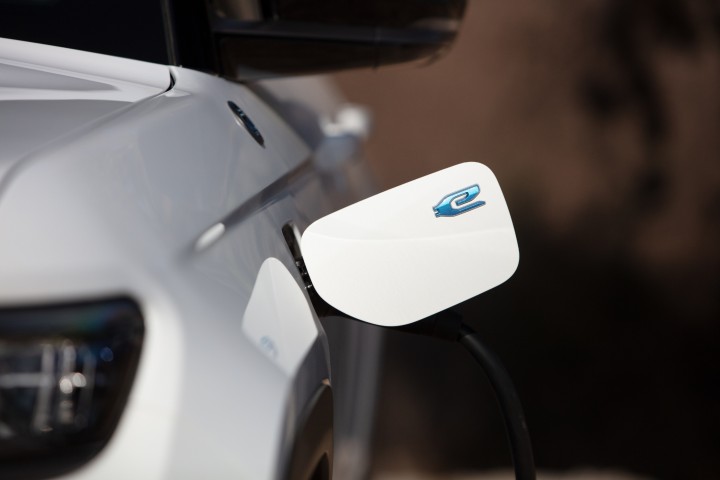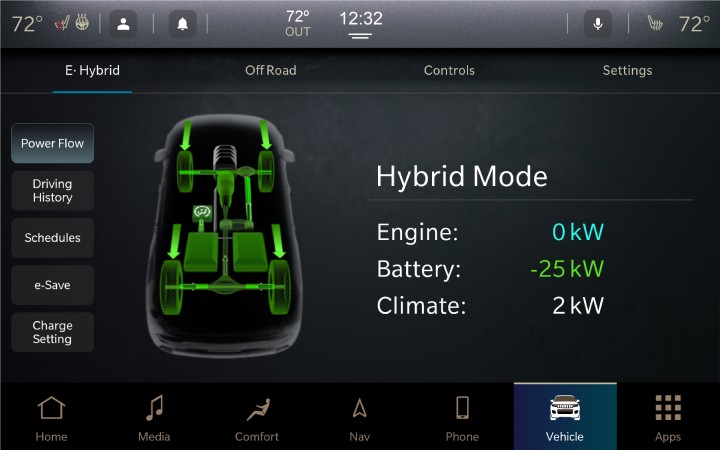ELECTRIFIED VEHICLES (PHEV) ®
Whether it’s day‑to‑day commuting or an off‑roading expedition, the relentless capability of the Grand Cherokee 4xe meets the lower emissions of a Plug‑In Hybrid Electric Vehicle (PHEV).
Discover the Plug‑In Hybrid Electric Jeep® Wrangler 4xe (PHEV) and experience true open‑air freedom, electrified..
ELECTRIFY YOUR INBOX!

Sign Up Today!
Be the first to know about the latest Electric, 4xe PHEV news, feature updates, and more by signing up for email updates.
YEARS HIGH-VOLTAGE BATTERY WARRANTY or 160,000 km,
HOURS ROADSIDE ASSISTANCE

Innovation By The Numbers
We know that range, charging time, affordability, and choice are of prime importance to our customers. That’s why our electrification strategy is not a one‑size‑fits‑all plan.
Our global engineering teams are developing vehicle platforms, propulsion, and energy storage systems that will enhance the inherent DNA of each of our iconic brands.
.
Two Battery Cell Chemistries
By 2024, we’ll offer two new battery chemistries – a high energy‑density option, and a nickel cobalt‑free alternative – that will improve battery performance and reduce production costs. The battery pack format will be standardized across our electrified vehicles, making them easy to install and upgrade once new technology is available.
Even more exciting news: by 2026, we plan to release our first solid state battery technology, which will offer the fastest possible charging times compared to current liquid‑centre batteries.
Three Electric Drive Modes
Different drivers have different needs. That’s why we’re introducing three Electric Drive Modes (EDMs) that combine the motor, gearbox, and inverter. The EDMs can be configured for front‑drive, rear drive, all‑wheel drive, and 4xe to accommodate the driving needs for every vehicle type. Combined with the new battery chemistry, the EDMs will help us deliver vehicles with Best‑In‑Class performance in efficiency, range, and recharging.
Four State-Of-The-Art Platforms
Our customers want choice and variety. To serve a wide range of vehicle segments, we’re developing four state‑of‑the-art vehicle platforms for battery electric vehicles (BEVs) that will share a set of common design, engineering, and production efforts, as well as major components. From city cars to pickup trucks and SUVs, the high level of flexibility and component sharing will help to reduce production costs, keeping electrified vehicles more affordable for our customers.
How EVs Work?
Battery Electric Vehicle (BEV) is a type of electric vehicle (EV) that is powered exclusively by electricity stored in its onboard battery pack. BEVs use electric motors and motor controllers instead of internal combustion engines (ICEs) for propulsion. They are charged by external electricity sources, typically through various types of charging stations.
PHEV stands for Plug-In Hybrid Electric Vehicle. PHEVs have a gas engine and an electric motor (or motors) powered by a battery that can be charged by plugging it in.
Plug-In Hybrid Vehicles (PHEVs) reduce total fuel consumption by combining two sources of power: an electric motor (or motors), and a gas engine. Typically, the vehicle runs on electric power first; once battery power is depleted, the vehicle will run on gas power alone until a sufficient battery charge is reached through plugging in the battery to recharge.
A Hybrid vehicle does not plug in to recharge the battery; instead, it continuously recharges the battery via regenerative braking and through operation of the engine.
In addition to regenerative braking and engine function, a Plug-In Hybrid (PHEV) battery can be recharged by plugging it in. A PHEV also has a larger battery capacity than a typical Hybrid vehicle, and can therefore drive zero-emission electric mode for longer before the combustion engine takes over. This results in overall lower tailpipe emissions than a regular Hybrid vehicle.
Regenerative braking collects and stores the kinetic energy used to stop the vehicle, and uses it to both charge the battery and help the gas-powered internal combustion engine to drive the vehicle. Just through normal driving, slowing down, and stopping, you contribute to the battery charge.
A PHEV requires gas to function properly, even when driving with zero-emission all-electric power. You should never drive without gas in the tank of your PHEV.
The total range of a Plug-In Hybrid Electric Vehicle (PHEV) depends on the vehicle's battery capacity and fuel tank capacity.
Charging And Battery
Depending on your location and the specific vehicle, you may qualify for rebates through the federal level, provincial level, or both. These rebates can provide significant savings on the purchase or lease of a new electrified vehicle.
Eligibility for rebates and incentives for the purchase or lease of an electrified vehicle varies according to your location and the type of vehicle you are purchasing.
Your dealership can help you determine the maximum rebates and incentives you qualify for, or you can explore federal incentives on the iZEV website, or check out your provincial rebate program for more information.
Your Plug-In Hybrid Electric Vehicle (PHEV) follows roughly the same maintenance schedule as a gas-powered vehicle, and will not need to be serviced more often. Therefore you can expect an equivalent cost for maintaining your PHEV.
Yes it can, depending on your driving habits and how frequently you recharge the battery. When your Plug-In Hybrid Electric Vehicle (PHEV)® is running in electric mode, it is not consuming fuel, saving you money on total fuel costs. The litres equivalent (L) rating of your electrified vehicle will tell you how many litres of gas are the equivalent to the battery power it would take to drive 100 km. In almost all cases, the Le/km is far lower than the gas-only fuel rating, indicating cost savings in terms of how much money you need to spend on fuel.
The costs of owning an electrified vehicle are predictable, and are more or less equivalent to what you would expect from a gas-powered vehicle.
There are also potential savings associated with an electrified vehicle (based on your driving habits). For example, driving with battery power reduces overall fuel consumption, so you may spend less money on gasoline overall. Also, since the electric motor is performing some of the work of driving, there will be less overall wear and tear on the gasoline engine, resulting in longer periods between engine maintenance.
The general costs of owning an electrified vehicle are based on:
• charging costs (local electricty rates, charging frequency, home charging centre installation)
• fuel costs (local gasoline prices, refuelling frequency)
• maintenance costs (regularly scheduled maintenance, repair costs)
• insurance costs
Cost & Rebates
Depending on your location and the specific vehicle, you may qualify for rebates through the federal level, provincial level, or both. These rebates can provide significant savings on the purchase or lease of a new electrified vehicle.
Eligibility for rebates and incentives for the purchase or lease of an electrified vehicle varies according to your location and the type of vehicle you are purchasing.
Your dealership can help you determine the maximum rebates and incentives you qualify for, or you can explore federal incentives on the iZEV website, or check out your provincial rebate program for more information.
Your Plug-In Hybrid Electric Vehicle (PHEV) follows roughly the same maintenance schedule as a gas-powered vehicle, and will not need to be serviced more often. Therefore you can expect an equivalent cost for maintaining your PHEV.
The costs of owning an electrified vehicle are predictable, and are more or less equivalent to what you would expect from a gas-powered vehicle.
There are also potential savings associated with an electrified vehicle (based on your driving habits). For example, driving with battery power reduces overall fuel consumption, so you may spend less money on gasoline overall. Also, since the electric motor is performing some of the work of driving, there will be less overall wear and tear on the gasoline engine, resulting in longer periods between engine maintenance.
The general costs of owning an electrified vehicle are based on:
• charging costs (local electricty rates, charging frequency, home charging centre installation)
• fuel costs (local gasoline prices, refuelling frequency)
• maintenance costs (regularly scheduled maintenance, repair costs)
• insurance costs
Yes it can, depending on your driving habits and how frequently you recharge the battery. When your Plug-In Hybrid Electric Vehicle (PHEV)® is running in electric mode, it is not consuming fuel, saving you money on total fuel costs. The litres equivalent (L) rating of your electrified vehicle will tell you how many litres of gas are the equivalent to the battery power it would take to drive 100 km. In almost all cases, the Le/km is far lower than the gas-only fuel rating, indicating cost savings in terms of how much money you need to spend on fuel.
Common Misconceptions
Modern electrified vehicles perform just as well as traditional gas-powered vehicles where it counts, including speed, quickness, and torque. For example, the Chrysler Pacifica Plug-In Hybrid Electric (PHEV) features an innovative dual-motor eFlite electrically variable transmission (EVT) offering
84 hp (63 kW) (Motor A) and 114 hp (85 kW) (Motor B).
Plug-In Hybrid Electric Vehicles (PHEVs) have the same limitations as conventional internal combustion engine vehicles when it comes to driving distance - the amount of fuel available. Having gas in the tank is required for both a gas-powered vehicle and a PHEV to function; however, the PHEV has an extra advantage - it can drive without using fuel as long as it has a sufficient battery charge.
At FCA Canada, we know a lot about Canadian winters, and our electrified vehicles are engineered to work in all kinds of weather conditions. Your Plug-In Hybrid Electric Vehicle (PHEV) has both an electric motor and a gas engine, so no matter what the temperature is, your vehicle will be able to drive. All of our electrified vehicles undergo rigorous testing to ensure the highest standards of safety and performance, so you can drive confidently every time you get behind the wheel.
Your electrified vehicle is engineered to drive safely in all driving conditions, including when it is raining. Just like the battery in a gas vehicle, electrified vehicle batteries are not adversely affected by rain in any way.
All FCA Canada vehicles, including our electrified vehicles, meet all Canada Motor Vehicle Safety Standards. There is no cause for concern about the safety of driving a Plug-In Hybrid Electric Vehicle (PHEV) any more than driving a gas-powered vehicle. You should always exercise caution while driving and follow all driving laws, regulations, and safety practices, but the vehicle itself does not pose any additional danger to you.
.png)
Experience true luxury with our Electric Vehicles.
Add your name and be among the first to experience it.










